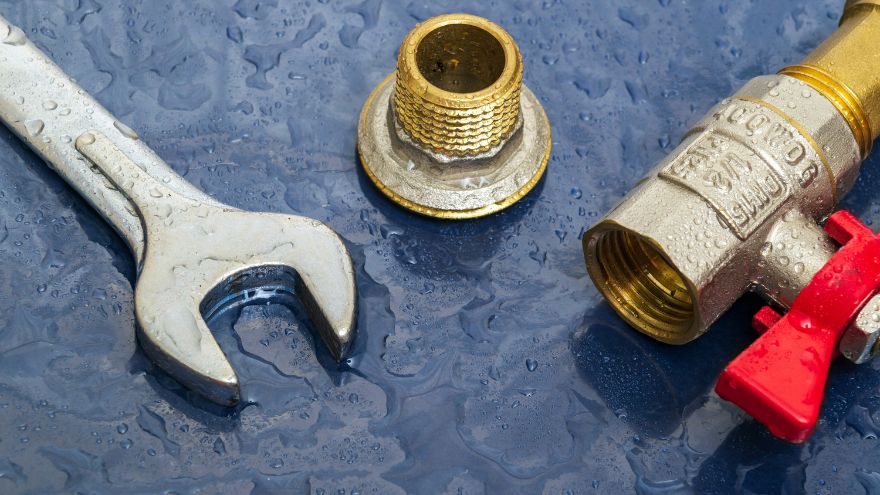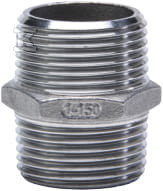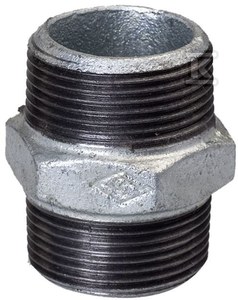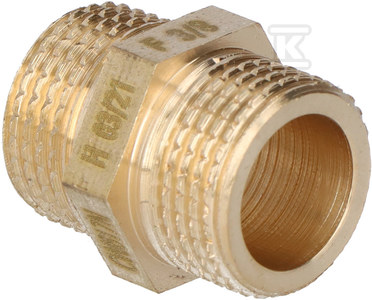Nipples are hydraulic connectors in the form of short tubes with external threads on both sides - as opposed to the coupler, which has an internal thread. They are widely used in hydraulic and gas installations. They are intended for creating pipe connections and other assembly works. Are you wondering which nipple to choose for your installation? We invite you to read this short guide! You will learn what materials nipples are made of, what their main types are and when the use of nipples makes sense.

Check out hydraulic nipples at the Onninen wholesaler
Characteristics of the nipple material
The most commonly used nipples are stainless steel and plastic. Cast iron and brass nipples are used slightly less often. The selection of a specific material depends on the specificity of a given installation.
 Steel nipples are resistant to low and high temperatures (in the range from -20°C to 300°C), corrosion, mechanical damage and the effects of various types of substances. Therefore, they are perfect for drinking water installations, in the food and oil industries, as well as in air conditioning, refrigeration and compressed air systems. Thanks to the additives used, they are resistant to salty and chlorinated water. Steel nipples create effective connections with copper, brass and bronze pipes. They can successfully work in difficult conditions. Their only drawback is the high price.
Steel nipples are resistant to low and high temperatures (in the range from -20°C to 300°C), corrosion, mechanical damage and the effects of various types of substances. Therefore, they are perfect for drinking water installations, in the food and oil industries, as well as in air conditioning, refrigeration and compressed air systems. Thanks to the additives used, they are resistant to salty and chlorinated water. Steel nipples create effective connections with copper, brass and bronze pipes. They can successfully work in difficult conditions. Their only drawback is the high price.
Brass nipples, containing mainly copper and zinc, are also resistant to low and high temperatures. They are used to connect elements in cold and hot water installations inside and outside buildings. The share of individual metals in the alloy determines what the nipple looks like. For example, zinc has a brightening effect, and copper gives it a characteristic brown color. Brass should not come into contact with certain acids that dissolve zinc, as well as with stagnant, salty and hard water. Also, hot liquid can cause the material to corrode. Therefore, brass nipples are suitable for heating installations where the water has a pH of 8.2-9.5.
Plastic nipples are cheap, flexible, easy to install and highly resistant to chemicals and salt and chlorinated water. They are perfect as connectors in swimming pool and drinking water installations and in marine aquariums. They can operate at temperatures from 0°C to +45°C, both above ground and in the ground. The plastic nipple is suitable for connection to an element made of another material. Its disadvantage is low resistance to UV rays.
Types of nipple connectors
 A nipple is an extremely popular connecting element in pipe installations, produced in various diameters and shapes. The regular nipple has external threads on both sides. In the middle there is a hexagonal ring in the shape of a flat wrench nut. A special type of element is the reducing nipple , in which each of the two threads has a different diameter.
A nipple is an extremely popular connecting element in pipe installations, produced in various diameters and shapes. The regular nipple has external threads on both sides. In the middle there is a hexagonal ring in the shape of a flat wrench nut. A special type of element is the reducing nipple , in which each of the two threads has a different diameter.
Another unusual variant are female nipples (also known as nipple couplings), which are a combination of a nipple and a female coupler. The female nipple has an external thread on one side and an internal thread on the other. There is also a radiator nipple that connects individual segments of multi-section radiators. It has two internal protrusions (instead of one central one), enabling rotation with a key, and two threads - left and right.
Wide use of the nipple in installations
Nipples are small accessories with an extremely wide range of applications in installations. They allow for quick and tight connection of two elements with internal threads, i.e. two elbows, an elbow with a special element (tee, quadruple, reduction) or a straight section or elbow with a receiver. Depending on the type of medium transferred, pressure and operating temperature, nipples of the appropriate size and made of appropriate materials should be used.
When is it worth choosing a reducing nipple?
A reducing nipple (also known as a reducing nipple) is a special type of connecting element, commonly used in industry, hydraulics, pneumatics and in sanitary and heating installations. It is equipped with external threads of various diameters. Enables diameter reduction to create an effective, durable and reliable connection. Various types of reducing nipples are available: threaded, quick-connect, pressure and others. It is worth choosing a reducing nipple whenever connections in the installation system require pipes of different diameters. One of the most popular versions is the ½ by ¾ nipple .
Nipples at the Onninen wholesaler
 In the Onninen hydraulic wholesaler you will find nipples in about 500 variants, only of proven, very good quality. We offer:
In the Onninen hydraulic wholesaler you will find nipples in about 500 variants, only of proven, very good quality. We offer:
- nipple ½ ,
- ¾ nipple ,
- nipple 1 inch ,
- nipple 3/8 ,
- 2 inch nipple .
All products come from market-leading manufacturers and suppliers of installation technology solutions. The solidity of the connectors translates into the effectiveness and durability of the connections created.
Are you planning plumbing work and don't know which fittings to choose? Contact us! We will help you select nipples that meet the technical requirements of the installation.